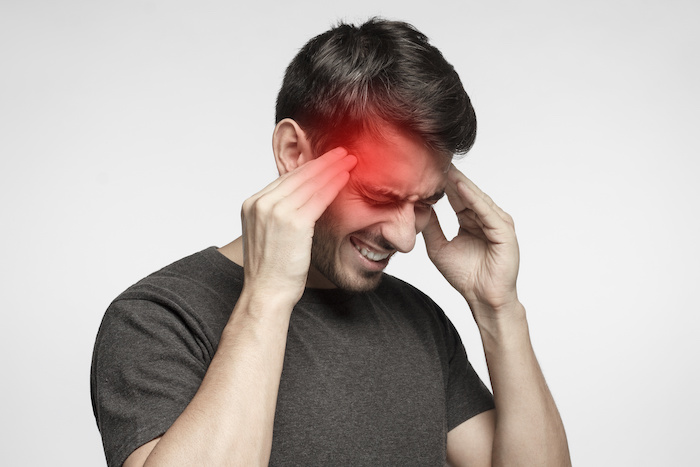Introduction
Headache is one of the most common health complaints around the world. In fact, more than half of all adults experience at least one head pain each year, according to the World Health Organization (WHO). While many headaches are mild and short-lived, others can be severe and disrupt daily life.
There are several different types of head pain, each with its own symptoms and causes. Some are triggered by stress, others by dehydration, lack of sleep, or even certain foods. Therefore, understanding what kind of headache you’re dealing with is essential to finding the right treatment.
In this post, you’ll discover the key causes of headaches, how to identify different types, and what you can do to get fast, effective relief.
What is a Headache?
A headache is defined as pain in any region of the head, ranging from the forehead to the back of the neck. It can occur on one or both sides of the head, be isolated to a certain location, or radiate across the entire head.

When Should You See a Doctor?
Common Causes of Headache
Headaches can stem from a wide range of triggers. Some are physical, while others are emotional or environmental. Below are some of the most common causes:
- Stress and anxiety: These are top contributors to tension-type migraines.
- Dehydration: Even mild dehydration can lead to a migraines.
- Poor posture: Sitting for long periods with improper back or neck support may lead to muscle tension and head pain.
- Skipping meals: Low blood sugar can quickly trigger a migraines.
- Lack of sleep: Not getting enough rest disrupts the brain’s chemistry, often resulting in pain.
- Eye strain: Spending hours in front of screens puts pressure on your eyes and head.
In addition, factors like hormonal changes, caffeine withdrawal, or even strong smells can also play a role. By identifying your specific triggers, you can better prevent migraines in the future
Types of Headaches
There are more than 150 different types of migraines. However, the most common ones include:
1. Tension Headaches
These are the most frequent type and usually feel like a constant, dull pain on both sides of the head. Often caused by stress, anxiety, or muscle strain.
Symptoms:
- Pressure around forehead or temples
- Tenderness in scalp or neck
- Mild to moderate intensity
2. Migraine
Migraines are intense migraines that can last from hours to days and often come with additional symptoms.
Symptoms:
- Throbbing or pulsing pain
- Nausea or vomiting
- Sensitivity to light and sound
- Visual disturbances (aura)
Migraines often have triggers like hormonal changes, certain foods, or changes in sleep patterns.
3. Cluster Headaches
Cluster migraines are rare but extremely painful. They occur in cyclical patterns or “clusters.”
Symptoms:
- Intense pain around one eye
- Redness or tearing of the eye
- Stuffy or runny nose
- Restlessness or agitation
They can occur multiple times a day and may wake a person from sleep.
4. Sinus Headaches
These occur when sinuses become inflamed due to infection or allergies.
Symptoms:
- Facial pressure or pain
- Nasal congestion
- Fever
- Pain worsens when bending forward
5. Rebound Headaches
These result from the overuse of migraines medication and often occur in people who take pain relievers regularly.
While most migraines are not serious, you should consult a doctor if:
- migraines are very frequent or severe
- You notice a sudden, intense migraines (worst in your life)
- You experience head pain after a head injury
- You have vision problems, confusion, or difficulty speaking
- Head pain is accompanied by high fever, stiff neck, or seizures
These could indicate a serious medical condition such as meningitis, stroke, or brain hemorrhage.
Effective Treatment for Headaches
Treatment depends on the type and cause of the migraines.
1. Over-the-Counter Medications
- Paracetamol (acetaminophen)
- Ibuprofen
- Aspirin
These are usually effective for tension-type and mild migraine migraines. Avoid overuse to prevent rebound migraines.
2. Prescription Drugs
For severe migraines or cluster migraines, your doctor may prescribe:
- Triptans
- Ergotamines
- Preventive medications (e.g., beta-blockers, antidepressants)
3. Home Remedies and Lifestyle Tips
- Apply a cold or warm compress
- Get enough sleep
- Stay hydrated
- Practice relaxation techniques like deep breathing or meditation
- Use essential oils like peppermint or lavender
- Take breaks from screens to reduce eye strain
4. Alternative Therapies
- Acupuncture
- Chiropractic adjustments
- Yoga and stretching exercises
- Biofeedback therapy
Prevention Tips: How to Avoid Headaches
Preventing migraines is often about managing your lifestyle and identifying personal triggers. Here’s what you can do:
1. Keep a Headache Diary
Track what you eat, sleep patterns, stress levels, and other potential triggers to find patterns.
2. Maintain a Healthy Sleep Schedule
Get 7–8 hours of quality sleep every night. Avoid staying up too late or sleeping in too long.
3. Manage Stress
Practice regular stress-reduction activities such as yoga, meditation, or even listening to music.
4. Eat Balanced Meals
Avoid skipping meals and stay away from trigger foods like chocolate, cheese, and processed meats.
5. Limit Caffeine and Alcohol
Too much caffeine or alcohol can lead to headaches or worsen existing ones.
Diet Tips for Headache Sufferers
Some foods may trigger headaches, especially migraines. Common offenders include:
- Aged cheese
- Processed meats (with nitrates)
- Caffeine
- Chocolate
- Red wine
- Artificial sweeteners
On the other hand, anti-inflammatory foods can help reduce headache frequency:
- Leafy greens (spinach, kale)
- Fatty fish (salmon, mackerel)
- Whole grains
- Fruits (berries, apples)
- Seeds (flax, chia)
Headaches in Children and Teenagers
Children can also suffer from headaches due to stress, dehydration, or eye problems. Always rule out vision issues or sinus infections. Limit screen time and ensure they drink plenty of water and get adequate sleep.
Frequently Asked Questions (FAQs)
Q1. Can stress really cause headaches?
Yes. Stress is one of the most common causes of tension-type headaches and can also trigger migraines.
Q2. Is it okay to take painkillers frequently for headaches?
It’s best to avoid frequent use of painkillers as it can lead to rebound migraines. Consult a doctor for persistent pain.
Q3. Are headaches a sign of something serious?
Most migraines are harmless. However, sudden, severe, or unusual migraines may indicate a more serious problem and require medical attention.
Q4. What is the best home remedy for headaches?
Applying a cold compress, staying hydrated, and resting in a dark, quiet room often help relieve migraines symptoms.
Conclusion
Headaches are a common but manageable condition. Identifying the type of migraines and its triggers is the key to effective treatment. While occasional migraines can be treated with rest or over-the-counter medicine, chronic or severe migraines require medical attention.
Make healthy lifestyle choices, stay hydrated, get enough sleep, and manage your stress to keep migraines at bay. If you experience frequent or worsening migraines, don’t ignore them—consult a healthcare professional for a proper diagnosis and treatment plan. you can see on WHO website also.

